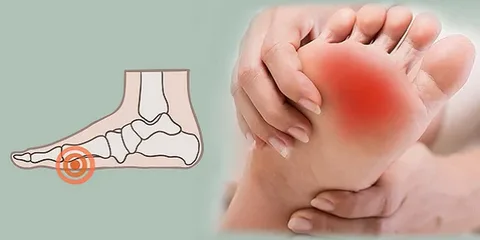Metatarsalgia is a common foot condition that causes pain in the ball of the foot. It can feel like a burning, aching, or sharp pain, especially when standing or walking. This condition often results from wearing tight shoes, high-impact sports, or foot structure issues. The pain can make daily movement difficult and uncomfortable.
Thankfully, help is available. With the right care and support, you can manage and even reduce this pain. Visiting a trusted Podiatry Clinic in Edinburgh is the first step to feeling better. A professional podiatrist can assess your feet, identify the exact cause, and offer treatment options suited to your needs. Treatments may include custom insoles, footwear advice, or targeted exercises.
The goal is not just to ease the pain but to help you move freely and confidently again. Early care makes a big difference. So, if you’re feeling discomfort in your forefoot, don’t wait too long.
Below are the key points we will now explore in more detail:
-
Understanding Metatarsalgia
-
Causes of Forefoot Pain
-
Expert Footcare Solutions
-
Custom Insoles & Support
-
Steps to Pain-Free Walking
Understanding Metatarsalgia
Metatarsalgia is a condition that causes pain in the ball of your foot. This pain usually comes from extra pressure on the front part of the foot. Many people feel a sharp, burning, or aching pain, especially when walking or standing for a long time.
At a trusted Podiatry Clinic in Edinburgh, specialists understand how this pain affects your daily life. They take the time to check your foot shape, walking pattern, and footwear. This helps them find the exact cause of the pain and choose the best treatment plan for you.
Sometimes, the pain comes from high-impact sports, poor shoes, or foot deformities. No matter the cause, early care can help reduce the pain and stop it from getting worse. That’s why it’s important to get a full check-up and treatment from trained podiatrists.
Causes of Forefoot Pain
There are many reasons why people suffer from pain in the front of the foot. One common cause is wearing shoes that are too tight or have little padding. These shoes put too much pressure on the bones in your forefoot, leading to discomfort.
Another common reason is high-impact activity. Running, jumping, or standing for hours can stress the bones and tissues in your foot. Sometimes, the pain can also come from foot conditions like bunions, hammertoes, or a high arch.
Age and weight may also play a role. As we grow older, the fat pad under the ball of the foot may get thinner. This can lead to less cushioning and more pain when walking.
Knowing the cause of your forefoot pain is important. It helps your podiatrist choose the right treatment. Whether it’s changing your shoes, adding custom insoles, or doing special exercises, the right solution starts with finding the cause.
Expert Footcare Solutions
When it comes to relieving metatarsalgia pain, expert footcare is key. Skilled podiatrists offer many helpful solutions to reduce pressure on your feet. First, they check your foot and walking style. This helps them learn where the pain is coming from and what treatment will work best.
One solution may be simple changes in footwear. Supportive shoes with good padding can ease the stress on your forefoot. Another helpful option is using metatarsal pads. These pads take pressure off the painful area and make walking more comfortable.
Your podiatrist may also teach you stretching and strengthening exercises. These improve foot strength and reduce the chance of future pain. If needed, they may suggest rest, cold packs, or anti-inflammatory treatments.
With the right care and advice, most people feel better in a few weeks. The key is to follow your podiatrist’s plan and avoid things that trigger the pain.
Custom Insoles & Support
Custom insoles, also known as orthotics, play a big role in treating metatarsalgia. These insoles are made to fit your feet exactly. They give support, reduce pressure, and help fix your walking pattern.
At your podiatry visit, your feet are scanned or measured. This allows the podiatrist to create insoles that match your foot shape and problem areas. Custom insoles can help distribute your body weight more evenly. They protect the forefoot and reduce sharp pain when you walk.
Besides comfort, custom insoles also help with alignment. They can correct posture problems that may cause more foot pain. They work well with proper shoes and help avoid future injuries.
Some people try store-bought insoles, but they often don’t give the support needed. That’s why custom ones from a podiatrist are much better. They are built just for your needs.
Steps to Pain-Free Walking
The journey to pain-free walking starts with simple changes and expert care. First, wear shoes that give your feet enough space and support. Avoid high heels or tight shoes, as they add pressure to your forefoot.
Next, follow the advice of your podiatrist. Whether it’s using custom insoles, applying pads, or doing exercises, each step brings relief. Walking slowly at first and increasing your pace as the pain improves is also important.
Staying active helps blood flow and healing, but avoid overdoing it. Use ice packs if your feet feel sore after activity. Stretch your feet and calves daily to keep them strong and flexible.
Conclusion
Metatarsalgia may be painful, but it is treatable with the right approach. Visiting a trusted Podiatry Clinic in Edinburgh is your best step forward. With expert care, custom solutions, and proper support, you can walk comfortably again—pain-free and confident.






